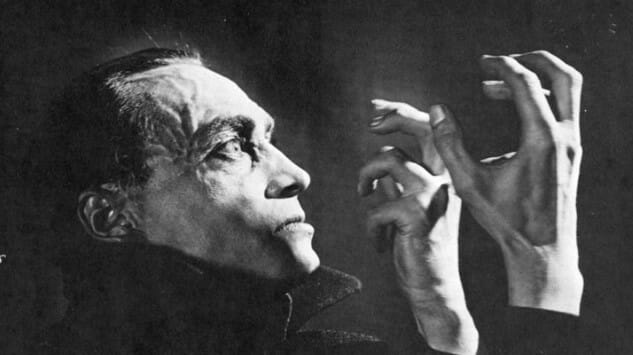
This post is part of Paste’s Century of Terror project, a countdown of the 100 best horror films of the last 100 years, culminating on Halloween. You can see the full list in the master document, which will collect each year’s individual film entry as it is posted.
The Year
After the iconic silent films that kicked off the era of cinematic horror in the beginning of the decade, 1924 has slowed down considerably. There’s very little of note from the American film industry in this year, even when accounting for lost films, aside from the oddity that is the 1924 version of Dante’s Inferno, which attempted to update Dante Alighieri’s epic poem to a modern American setting. The only really notable films are from Austria and Germany, in the form of The Hands of Orlac and another House of Wax precursor, Waxworks. Of the two, Orlac gets the edge.
1924 Honorable Mentions: Waxworks, Dante’s Inferno
The Film: The Hands of Orlac
Director: Robert Wiene
The Hands of Orlac is arguably the next most prominent work in the filmography of director Robert Wiene, after the monolith that is The Cabinet of Dr. Caligari. Unlike that film, this one is an example of German Expressionism more in its motifs and performances than in art direction or settings—no topsy-turvy dream city to navigate, this time. Rather, the setting is grounded in the cold reality of modern Austria, although the film’s protagonist is haunted by the threat of the fantastical.
Conrad Veidt, our somnambulistic killer from Caligari—and four years before he’d appear as the title character in The Man Who Laughs—plays a concert pianist named Paul Orlac, who loses his hands in a grisly accident. Desperate for a way to maintain his livelihood, he turns to modern medicine and is granted a new set of transplanted hands, but with a catch—they previously belonged to an executed murderer named Vasseur. Repulsed by the thought of living with a killer’s hands, Orlac begins to spiral into paranoia at the thought that his hands are alien to him, still containing some vestige of the killer’s evil ways. And when someone close to him turns up dead, slain by the killer’s own knife, Orlac can’t help but question whether he might somehow be responsible.
A classic of the “am I suffering from mental illness, or an elaborate hoax?” variety, ‘ala The Game, Orlac is one of the first classics of a subgenre we would come to refer to as “body horror.” As in other examples of body horror, fear is driven from the subconscious questioning of whether one’s own being can be trusted, or whether it has somehow been invaded, stolen or corrupted by an outside force. The same themes would go on to be mined in both a serious manner by the likes of David Cronenberg, in films like Shivers or Rabid, and in horror comedies like Evil Dead 2 or even 1999’s Idle Hands.
The Hands of Orlac has seen several remakes, including 1935’s Mad Love, starring Peter Lorre and Frankenstein’s Colin Clive as the titular character, and 1960’s The Hands of Orlac starring Mel Ferrer and Christopher Lee. None can quite pull off the emotive simplicity of Veidt’s performance, however, and you’re likely better off sticking to the original, which is easy to find in the public domain.
Jim Vorel is a Paste staff writer and resident horror guru. You can follow him on Twitter for more film and TV writing.